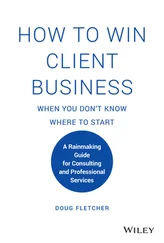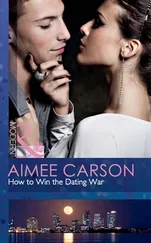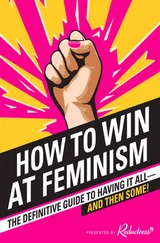If our fork-lift truck driver was inexperienced, it would clearly not be wise to put him or her into a fork-lift truck and see how little damage is done! It would be better to measure those abilities we know are involved in driving a fork-lift truck, such as hand to eye co-ordination, spatial awareness and so on, and then use the information obtained to infer how the person might perform in the job once they had been trained. Because of this, Job Simulations are often used when selecting people for training or when they have no direct experience in or specific knowledge of the job in question.
Another common type of Job Simulation is the so-called ‘In-basket’, or ‘In-tray’, which is used for many management-based selection activities. The In-tray simply involves taking the contents of a manager’s typical in-tray and working through them, making decisions as to what to do with each item as you go. These simulations are often used to assess organizational and decision-making ability, and are quite commonly used in management selection. However, you do need the contents of a real in-tray to base the exercise on and these contents can be both numerous and diverse – an entire in-basket could easily fill this book!
In addition, tests like In-trays are very difficult to score correctly because there is often no single correct way to deal with the items. Consequently, they tend to be followed up by a presentation from, or interview with, the candidate during which they explain how they worked their way through the in-tray, what criteria they used for decision making and how they justified their actions.
HOW AND WHY COMPANIES USE APTITUDE TESTS
Where Do Tests Fit into the Wider Selection Process?
The purpose of a selection system is to make a prediction about who will be successful at the job. It does this by gathering evidence about a candidate, weighing that evidence and then making a decision as to whether or not to offer them a position.
One thing that many candidates mistakenly believe is that the test constitutes the complete selection process. In fact, tests are very rarely used as a first stage in selection. Usually, the process begins long before a job is advertised and typically it involves the following steps.
This is carried out to determine the key tasks of the job. It can involve sophisticated analytical methods using data about several hundred job holders, or it can be done using ‘expert analysis’ which involves a group of individuals, who are very familiar with the job, sitting down and agreeing what the job involves. In cases where there are relatively few employees (which rules out large-scale statistical analysis) the latter method tends to be used.
Producing the Job Description
This is a formal description of the tasks identified as a result of the job analysis.
Producing the Person Specification
This often takes quite a lot of work. The key challenge for the organization here is to identify the knowledge, skills, attributes and abilities a person must possess if they are to be able to carry out the tasks described in the Job Description. Very often these characteristics, contained in the Person Specification, are classified as being either ‘essential’ or ‘desirable’.
Identifying What the Success Criteria Will Be
This involves setting success criteria for future work performance for use in work appraisals. This stage is often overlooked, but it remains an important part of the process since it allows the organization to analyze how well their selection system and selection tools actually predicted work success.
Choosing the Selection Tools
The selection tools are then chosen based on their effectiveness at measuring those characteristics described in the Person Specification. They may include interviews, tests, CVs, application forms, and individual or group exercises.
Applying the Chosen Selection Tools
This is often done in several stages, with successful candidates at one stage being invited to participate in the next. Sometimes, candidates may be pre-selected based on qualifications or experience, and then invited to come along to an assessment day (sometimes known as an assessment centre), during which all of the tools are used.
Weighing Evidence Gathered From the Selection Tools
Usually, no single assessor has the final say over any one candidate. In the case of assessment centres in particular, an observation and scoring system is devised which means that different assessors observe different candidates over the course of the day, and the ratings allocated to each candidate by each assessor are scored using a standardized scoring system. Conflicting evidence is discussed and an overall rating is agreed upon by the whole assessment team. This occurs after the assessments have been carried out and the candidates have gone home.
Making a Selection Decision
This is based on the evidence that has emerged from the assessment process. The decision as to whether or not to offer someone a job is seldom solely based upon the need to hire someone, rather it is based upon the evidence. It is not uncommon for an organization not to hire any of the candidates they have seen, especially if all of the candidates have weaknesses in one or more ‘essential’ areas of the person specification.
The final decision can be based on a simple test score ‘cut-off’ as a first stage (where test scores are clearly related to job performance). A more sophisticated process might involve ‘regression’ or ‘factor analysis’, and a ‘multi-stage actuarial decision process’. But these are in the realms of advanced selection theory and beyond the scope of this book.
There is no use in worrying about it – you can’t influence the decision making process, mainly because you will not be there when it goes on! Do bear in mind that if this process has been gone through thoroughly by the organization, you can take some comfort from the fact that the selection or recruitment process and decision-making mechanism are based on evidence and have been designed to be as objective and error free as possible. The fact that an organization uses tests should be viewed as a source of comfort rather than dread.
WILL I ONLY COME ACROSS TESTS WHEN I APPLY FOR A JOB?
The answer to this question is probably ‘No’. When one considers the type of information a test produces, it is clear that the information can be broadly classified into two areas:
1 This person has the ability that is required.
2 This person does not have the ability that is required.
When looked at like this, the outcome from a test can also be used very effectively in development. This is particularly the case with the ‘softer’ behavioural skills which personality tests assess.
Tests are also used extensively in Career Development work, often in conjunction with a Personal or Career Development Plan.
In the following chapters we will go through example tests. For some types of test there is quite a bit of background involved. This is because areas such as numerical ability can cover a wide range of information and are applicable to many different types of job. Numerical ability testing is one area people worry about more than any other, so there is more space given to this. Other areas, such as mechanical reasoning, are more straightforward, more self-explanatory. The main categories of aptitude tests covered are:
Читать дальше












